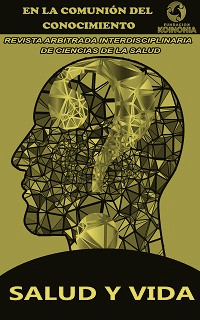Association between dysergonomic risks and musculoskeletal injuries in mine operating personnel
DOI:
https://doi.org/10.35381/s.v.v7i2.3192Keywords:
Musculoskeletal system, musculoskeletal physiological phenomena, musculoskeletal development+, (Source: DeCS)Abstract
Objective: To identify the association between dysergonomic risk factors and musculoskeletal injuries in the mining personnel of the company Minervilla S.A. Method: Descriptive observational. Results and conclusions: The existence of dysergonomic hazards, identified through the application of the ISO TR 12295:2014 questionnaire, where two indicators of dysergonomic risks for the operating personnel are evidenced. The risk factors are lifting loads with a risk estimate of 95%5% and postures and forced movements with a risk of 88.76%, the high percentage is due to the poor conditions in which the activities are performed. On the other hand, a low percentage is consolidated in the factors of transporting loads with 23.6%, repetitive movements of the upper extremity with 15.73% and pushing and pulling loads with 11.2%, this is due to the existence of favorable working conditions.
Downloads
References
Widanarko B, Legg S, Devereux J, Stevenson M. Interaction between physical and psychosocial work risk factors for low back symptoms and its consequences amongst Indonesian coal mining workers. Appl Ergon. 2015;46:158-167. doi:10.1016/j.apergo.2014.07.016
Ropponen A, Samuelsson Å, Alexanderson K, Svedberg P. Register-based data of psychosocial working conditions and occupational groups as predictors of disability pension due to musculoskeletal diagnoses: a prospective cohort study of 24,543 Swedish twins. BMC Musculoskelet Disord. 2013;14:268. doi:10.1186/1471-2474-14-268
Mansoor SN, Al Arabia DH, Rathore FA. Ergonomics and musculoskeletal disorders among health care professionals: Prevention is better than cure. J Pak Med Assoc. 2022;72(6):1243-1245. doi:10.47391/JPMA.22-76
Habib RR, Messing K. Gender, women's work and ergonomics. Ergonomics. 2012;55(2):129-132. doi:10.1080/00140139.2011.646322
Betsch D, Gjerde H, Lewis D, Tresidder R, Gupta RR. Ergonomics in the operating room: it doesn't hurt to think about it, but it may hurt not to! Can J Ophthalmol. 2020;55(3 Suppl 1):17-21. doi:10.1016/j.jcjo.2020.04.004
Neusa Arenas G, Alvear Reascos RR, Cabezas Heredia EB, Jiménez Rey JF. Riesgos disergonómicos: Biometría postural de los trabajadores de plantas industriales en Ecuador [Dysergonomic risks: Postural biometry of industrial plant workers in Ecuador]. REV CIENC SOC-VENEZ [Internet]. 2019;250:415-28.
Cercado Bajaña MM, Chinga Carreño GP, Soledispa Rodríguez XE. Riesgos ergonómicos asociados al puesto de trabajo del personal administrativo [Ergonomic risks associated with the work place of administrative personnel]. Rev. Publicando [Internet]. 2021;8(32):69-81.
Acosta RH. Condiciones de trabajo, los riesgos ergonómicos y sus efectos sobre la salud en el personal de enfermería [Working conditions, ergonomic risks and their effects on the health of nursing personnel]. Salud, Ciencia y Tecnología [Internet]. 2022;2:61.
Hämmig O. Work- and stress-related musculoskeletal and sleep disorders among health professionals: a cross-sectional study in a hospital setting in Switzerland. BMC Musculoskelet Disord. 2020;21(1):319. doi:10.1186/s12891-020-03327-w
Epstein S, Sparer EH, Tran BN, et al. Prevalence of Work-Related Musculoskeletal Disorders Among Surgeons and Interventionalists: A Systematic Review and Meta-analysis. JAMA Surg. 2018;153(2):e174947. doi:10.1001/jamasurg.2017.4947
Mohammadipour F, Pourranjbar M, Naderi S, Rafie F. Work-related Musculoskeletal Disorders in Iranian Office Workers: Prevalence and Risk Factors. J Med Life. 2018;11(4):328-333. doi:10.25122/jml-2018-0054
Zamora Macorra M, Martínez Alcántara S, Balderas López M. Trastornos musculoesqueléticos en trabajadores de la manufactura de neumáticos, análisis del proceso de trabajo y riesgo de la actividad [Musculoskeletal disorders in tire manufacturing workers, analysis of work process and activity risk]. Acta Universitaria [Internet]. 2019;29:1-16.
Hämmig O, Knecht M, Läubli T, Bauer GF. Work-life conflict and musculoskeletal disorders: a cross-sectional study of an unexplored association. BMC Musculoskelet Disord. 2011;12:60. doi:10.1186/1471-2474-12-60
Van Eerd D, Munhall C, Irvin E, et al. Effectiveness of workplace interventions in the prevention of upper extremity musculoskeletal disorders and symptoms: an update of the evidence. Occup Environ Med. 2016;73(1):62-70. doi:10.1136/oemed-2015-102992
Bevan S. Economic impact of musculoskeletal disorders (MSDs) on work in Europe. Best Pract Res Clin Rheumatol. 2015;29(3):356-373. doi:10.1016/j.berh.2015.08.002
Published
How to Cite
Issue
Section
License
Copyright (c) 2023 France Andreina Maldonado-González, José Renán Molina-Delgado, Raúl Comas-Rodríguez, Mario Fernando Rivera-Escobar

This work is licensed under a Creative Commons Attribution-NonCommercial-ShareAlike 4.0 International License.
CC BY-NC-SA : Esta licencia permite a los reutilizadores distribuir, remezclar, adaptar y construir sobre el material en cualquier medio o formato solo con fines no comerciales, y solo siempre y cuando se dé la atribución al creador. Si remezcla, adapta o construye sobre el material, debe licenciar el material modificado bajo términos idénticos.
OAI-PMH: https://fundacionkoinonia.com.ve/ojs/index.php/saludyvida/oai.









